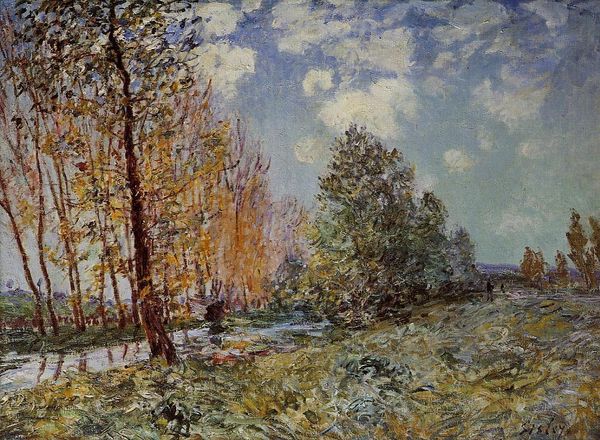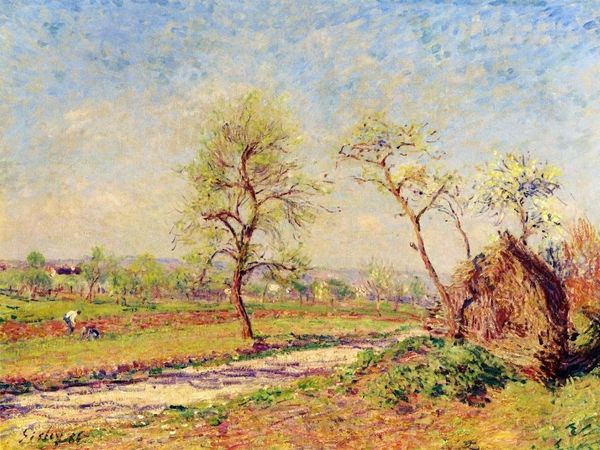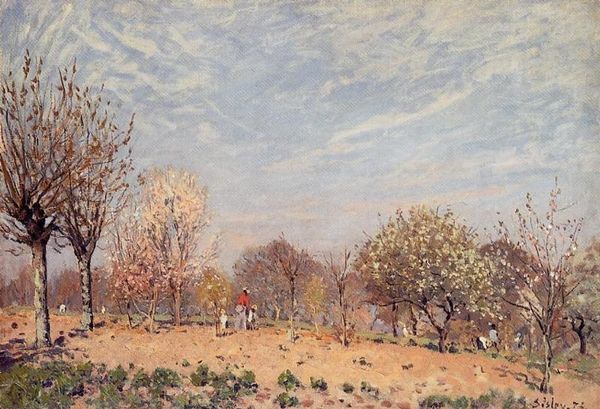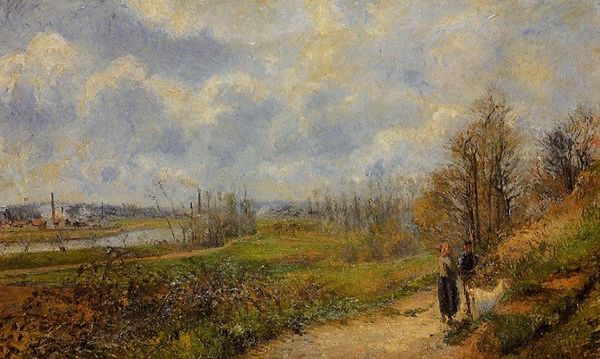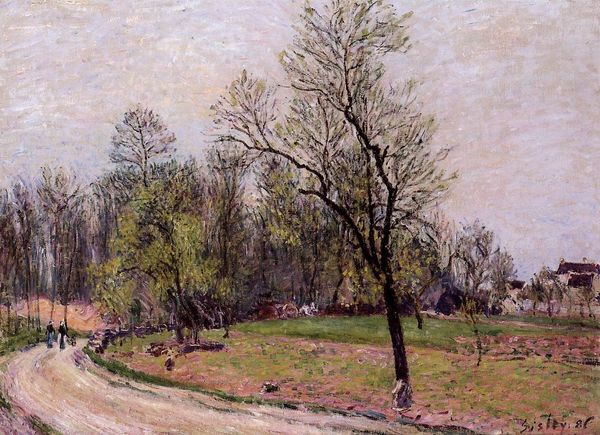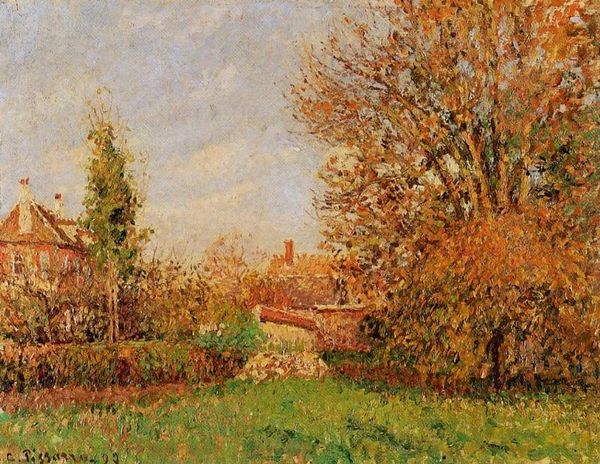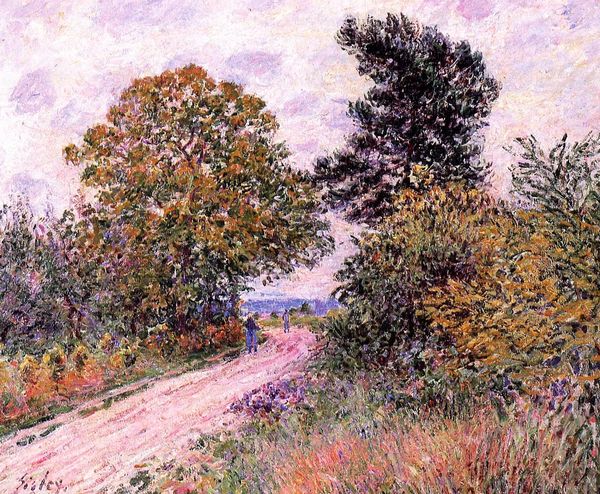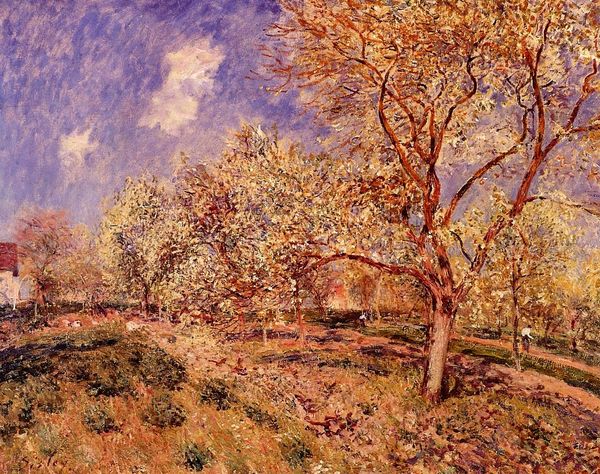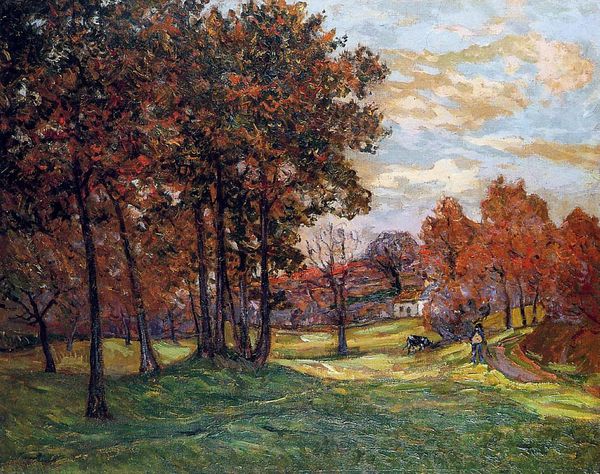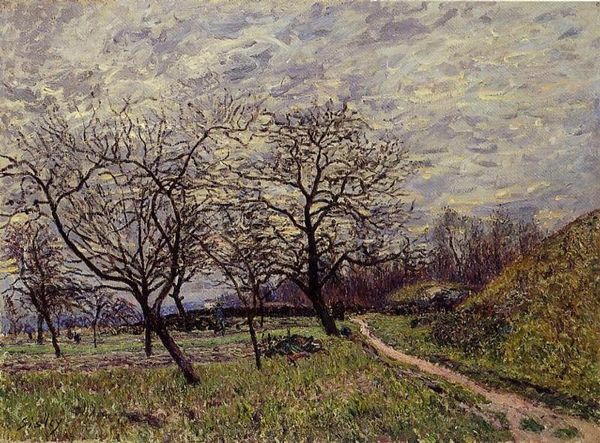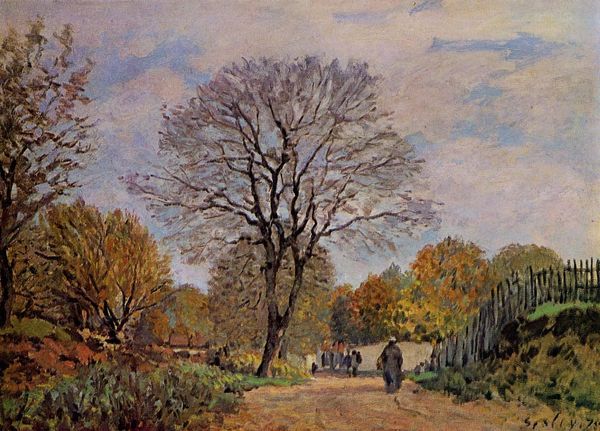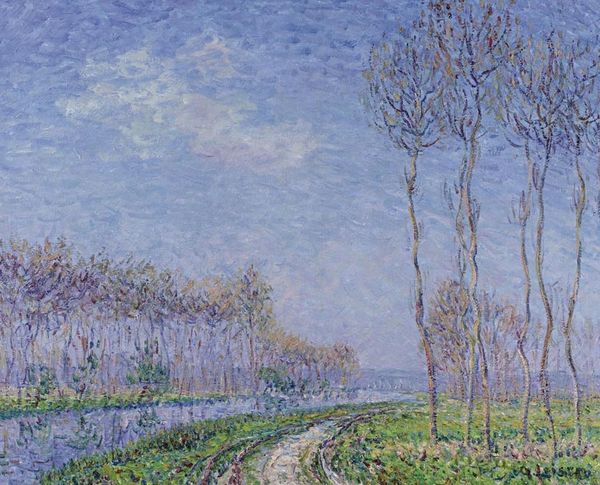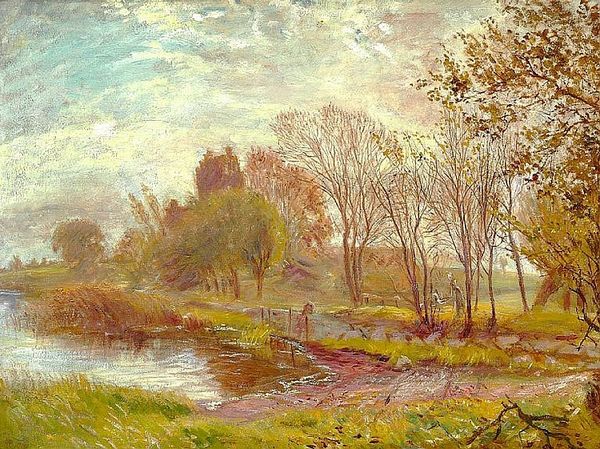
Dimensions: 55 x 73 cm
Copyright: Public domain
Editor: This is Alfred Sisley's "A May Morning in Moret," painted in 1886. It’s such a gentle scene; the sunlight filtering through the trees creates a really serene and inviting mood. What do you see in this piece, from an iconographic point of view? Curator: Immediately, I'm drawn to the light and how Sisley uses it as a primary symbolic language. Light in paintings, especially landscapes like this, often represents enlightenment, the dawn of a new era, or even a spiritual awakening. Given the title "A May Morning," it aligns perfectly with themes of rebirth and renewal tied to springtime rituals and festivals that are universal across cultures. Editor: That’s fascinating! I hadn't thought about it that way. So the specific choice of a "May Morning" adds to the imagery? Curator: Precisely. May has deep roots in pagan traditions celebrating fertility and the earth's bounty. Visually, consider the lone figure walking along the path. Roads often signify life's journey, but in combination with the morning light and the springtime setting, this path symbolizes opportunity and new beginnings. What emotional reaction do you get from this? Editor: I definitely get a sense of hope, of possibilities opening up. Also, that haystack to the left feels like a reminder of the changing seasons. Curator: Absolutely. Even a seemingly simple haystack contributes. Historically, haystacks aren’t merely agricultural; they're symbols of preparation, foresight, and community—provisions for the future gathered together. This reflects human connection to nature. Are you sensing any tension between the natural world and man-made intervention? Editor: I think so, now that you mention it. There’s the natural beauty of the trees and fields, but also the carefully managed road. The path almost carves through that organic chaos. It’s balanced in a subtle way. Curator: Yes, it subtly questions our role within this environment. This shows us that seemingly straightforward paintings often contain layers of symbolic communication about our place in the world, our dreams and fears, and the ever-repeating cycles that frame human existence. Editor: I'll never look at an Impressionist landscape the same way again! Thanks so much.
Comments
No comments
Be the first to comment and join the conversation on the ultimate creative platform.
